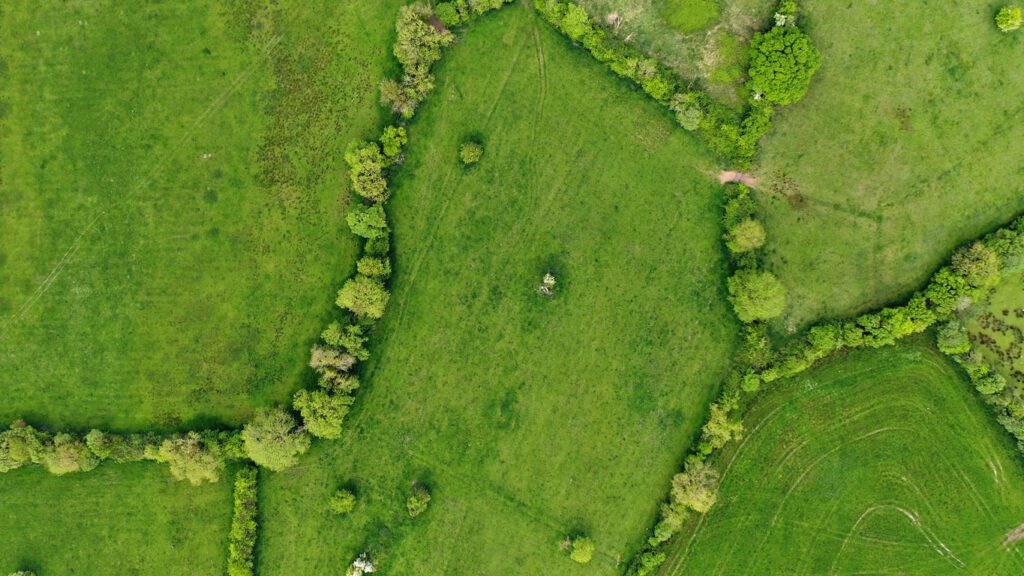Author
What are the issues and how can I ensure the ransom strip remains valuable?
This article is one in a series looking at methods of structuring strategic land transactions. Further and more detailed information about other elements of strategic land can be found on our strategic land page.
A common feature when selling development land is retention of a strip of land along any boundaries with adjoining third party land that could have future development potential but would likely need to run access or services across the ransom land. Structured properly, any third party looking to develop the adjoining land will need to pay to cross the ransom. This article considers the issues arising when negotiating retention of ransom land and/or its release and how to maintain its value.
1. What does a ransom strip look like?
Ransom strips are usually defined as a strip of land ranging between 0.3m to 0.5m wide specified to lie between certain points shown on a plan. They sometimes physically exist on the ground and are demarcated from the main title by a fence or other structure, however, more commonly they exist only on paper. Ransoms are often at risk of being lost through adverse possession by third parties, especially if they do not exist on the ground.
Ransom strips are usually created by being retained when a landowner sells the main site. Where land is sold under a promotion agreement, a ransom strip can be jointly owned by the seller and the promoter thereby giving both parties the right to share in any future value generated by it.
2. Is the ransom ransomed?
Merely retaining ownership of the strip may not be enough to realise full value from a third party who needs to connect through it. When selling the main title, unless the sole reason for the ransom is to prevent the main site purchaser acquiring adjoining land, the landowner should reserve full rights of access and services for the benefit of the ransom land.
It may be appropriate for a developer of the main site to install an access road and services to a connection point with the ransom or alternatively, for the owner to enter the site to do so. The owner may need to carry out later works to upgrade or increase capacity of the same. It may also need the main site owner to procure adoption and/or enter into planning, works or other statutory agreements. Such obligations would ideally be protected by title covenants and possibly a title restriction. Without considering these points, a landowner may find the ransom worthless.
3. How much is the ransom worth?
The advice of an experience surveyor will be required to assess value. The ransom landowner of fully ransomed adjoining land can often expect to receive 30% – 50% of the increase in value. The surveyor will consider the residual calculations, comparable evidence, construction costs and profits. The timing of the valuation will also have an impact. A developer may wish to negotiate value and complete the release of a ransom before obtaining planning permission.
4. How can I protect my ransom land?
Ensure that the ransom strip is properly registered at the Land Registry. If the ransom land is unregistered, attend to voluntary first registration. Set a ‘Property Alert’ on the land at the Land Registry so that you are notified if any third party seeks to register any form of notice against the land.
The purchaser of the main site may need access to the ransom land in order to carry out development works and/or comply with planning conditions. If rights are granted over the land, then these may circumvent the ransom. Rights should be restricted wherever possible, however, if the purchaser insists on access over the ransom, restrict these to the use of the site and specifically state that no rights may be granted for the benefit of any adjoining land. Bear in mind that once services are installed and adopted, they are controlled by the utility company who may allow adjoining landowners to connect.
5. When releasing a ransom, should I transfer the land or simply grant rights over it?
If the ransom land payment has been calculated based on a specific development, consider whether the landowner wishes to share in future increases value if planning on the adjoining scheme is improved or proceeds with a more valuable form of development. Retaining ownership and granting rights over the ransom for the specific development, may allow the landowner to keep control.
6. Should a ransom strip be retained when selling my land?
Whilst a ransom strip may sound an attractive structure to claw back value realised from adjoining land, a landowner should consider overage as an alternative approach. Overage terms protected by title restriction may be easier to protect and enforce than theoretical ransom land that does not exist on the ground.
Further and more detailed information about other elements of strategic land can be found here.
Author
Michelmores Property Development Club
The Michelmores Property Development Club (PDC) is a forum for developers and property professionals to connect and share knowledge. The Club is celebrating its 22nd...
Michelmores Property Awards
Celebrating the best of property, development and construction in the South West The Michelmores Property Awards celebrate the best property, development and construction projects in...



